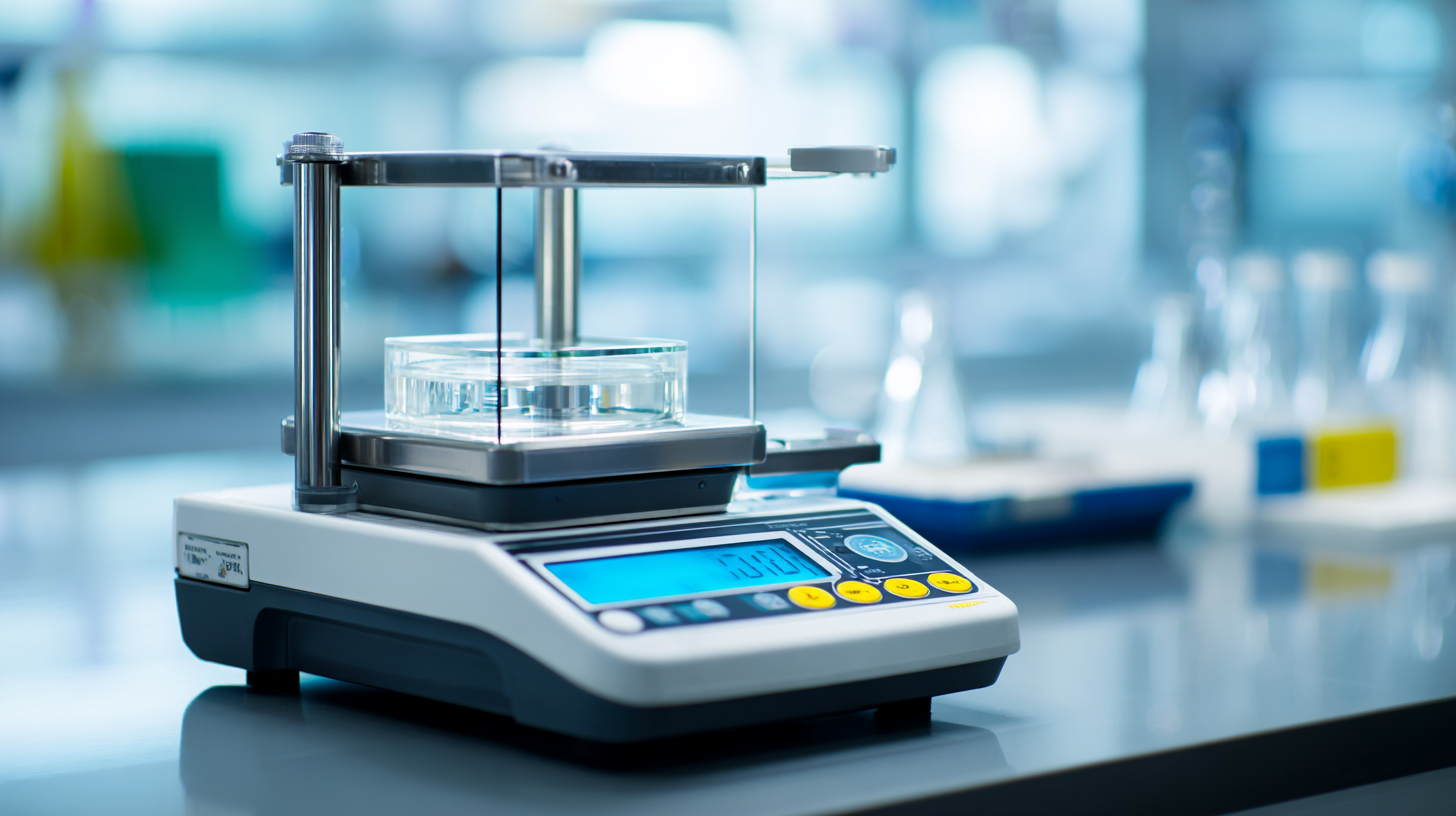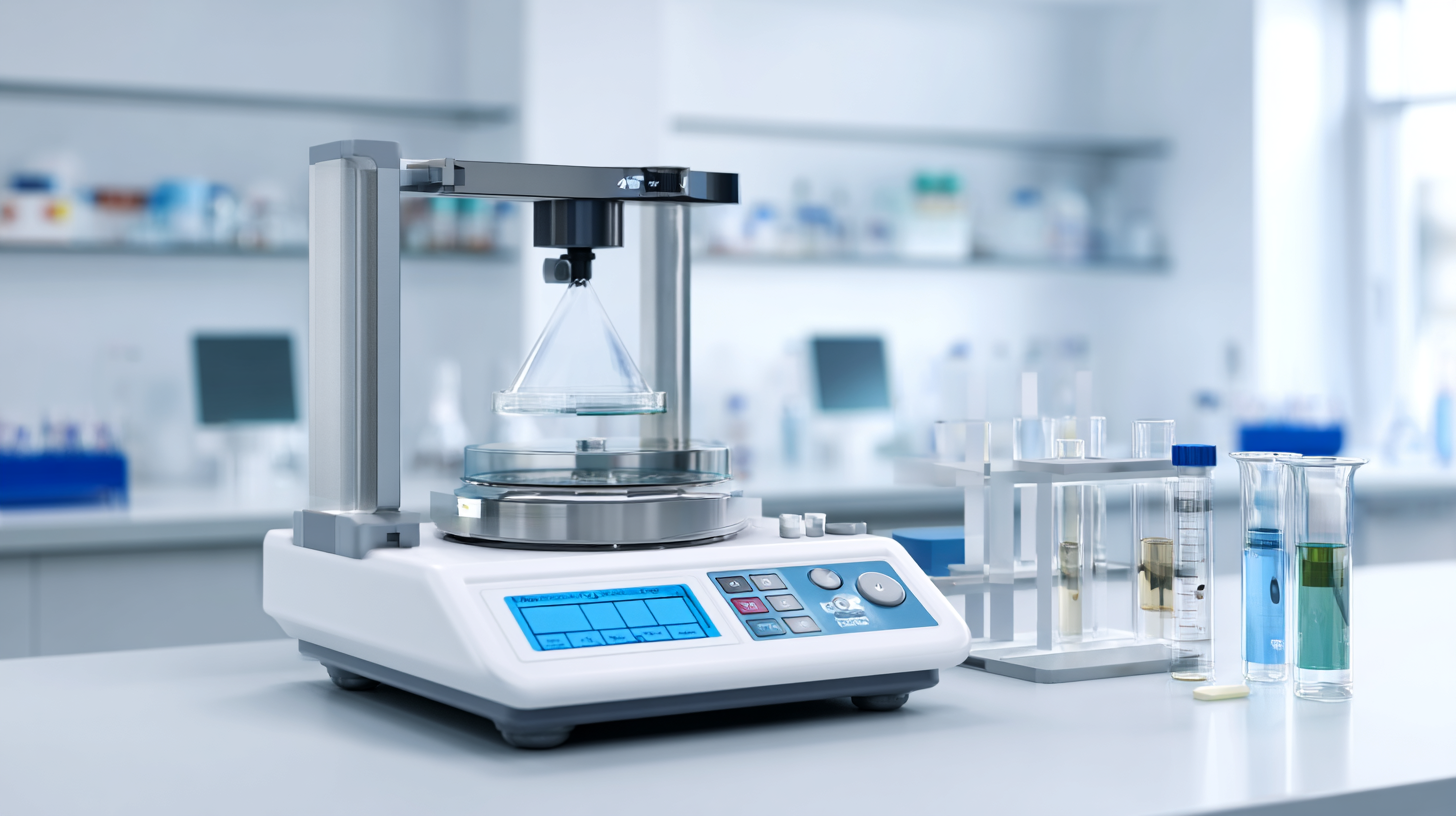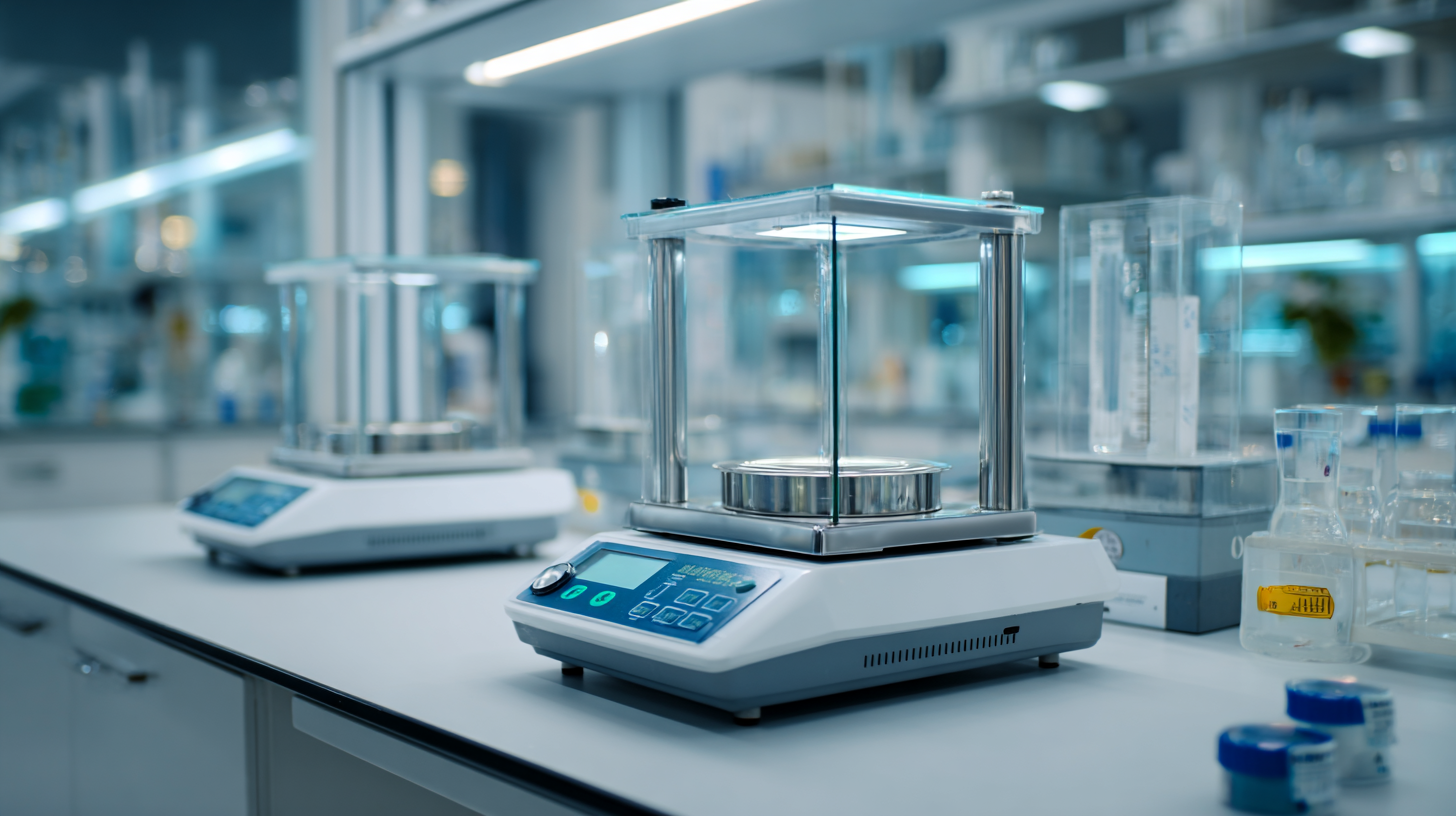In today's fast-paced scientific environment, the precision and accuracy of measurements are paramount, making the choice of the right equipment crucial for laboratory success. An Analytical Balance, known for its ability to measure mass with exceptional accuracy, is an indispensable tool in various fields, including pharmaceuticals, chemistry, and food science. According to a report by Grand View Research, the global market for laboratory balances is expected to reach $1.5 billion by 2025, growing at a CAGR of 5.4%. This surge highlights the increasing demand for high-precision instruments in research and quality control tasks. The benefits of selecting the appropriate Analytical Balance extend beyond mere measurement; they include enhanced data reliability, improved workflow efficiency, and compliance with stringent regulatory standards. As laboratories strive to meet the evolving challenges of modern science, understanding the advantages of different types of Analytical Balances becomes essential for optimizing both performance and results.

When selecting the best analytical balance for your laboratory, several key features are crucial for ensuring accurate measurements. First, sensitivity and readability are paramount; look for balances with a readability of at least 0.0001 grams. This high level of precision is essential for applications requiring meticulous weight measurements, such as pharmaceuticals or chemical research.
Additionally, consider the maximum capacity of the balance. Depending on your typical sample sizes, ensure that the balance can accommodate your largest expected weights without compromising accuracy.
Another important aspect to assess is the balance’s protection against environmental factors. Features such as draft shields and built-in weight calibration help maintain precision by reducing the effects of air currents and ensuring ongoing accuracy. It's also wise to evaluate the ease of use and user interface; intuitive controls and clear displays can significantly enhance productivity.
Finally, don't overlook connectivity options, such as USB or Bluetooth, allowing for seamless data transfer to computers or laboratory information management systems, which streamlines your workflow and reduces the likelihood of human error during data collection.
When selecting the right analytical balance for your laboratory, understanding the different types available is crucial. Analytical balances come in various models, including top-loading, micro, and heavy-duty balances, each designed for specific applications. According to the International Organization for Standardization (ISO), a precision level of at least 0.1mg is essential for accurate measurements in pharmaceuticals and chemical analysis, making microbalances particularly valuable in these fields. With the global analytical balance market projected to reach USD 1.2 billion by 2025, driven by advancements in technology, it's vital to select a model that fits both current and future research needs.
Furthermore, the choice of analytical balance significantly impacts the quality of experimental results. For instance, the use of high-performance balances equipped with advanced features like anti-vibration systems can enhance accuracy by reducing environmental influences. A report by Research and Markets highlights that balances with such technological advancements improve measurement consistency by over 20%, highlighting their value in laboratories where precision is paramount. Understanding these types and their respective applications ensures that laboratory professionals can make informed decisions, maximizing both efficiency and accuracy in their work.
| Type of Analytical Balance | Capacity (g) | Readability (mg) | Application |
|---|---|---|---|
| High Precision Analytical Balance | 220 | 0.1 | Pharmaceuticals, Research |
| Semi-Micro Balance | 64 | 0.01 | Material Testing, Weighing Small Samples |
| Micro Balance | 10 | 0.001 | Research, High-Precision Weighing |
| Analytical Balance with Draft Shield | 200 | 0.1 | Laboratory Weighing, Environmental Testing |
| Portable Analytical Balance | 300 | 1 | Field Work, On-Site Testing |
When it comes to selecting the best analytical balance for your laboratory, evaluating the reputation of suppliers and manufacturers is crucial. A trusted supplier not only ensures the quality of the instrument but also provides reliable customer support and service. To gauge a manufacturer’s reputation, start by researching their history in the industry. Look for companies that have been operational for several years and have established themselves as leaders in analytical measurements. Customer reviews and testimonials can also provide insights into the reliability and performance of their products.

Additionally, consider the certifications and standards that the manufacturer adheres to. Reputable suppliers often comply with international standards such as ISO or GLP, which reflect their commitment to quality and reliability. Networking within your professional community can also yield valuable recommendations from colleagues who have firsthand experience with specific brands. By thoroughly assessing supplier reputation, you can ensure that your laboratory invests in a reliable analytical balance that meets your specific needs and enhances your research capabilities.
When it comes to selecting an analytical balance for your laboratory, understanding how to compare prices and features is crucial. A recent report by Research and Markets indicates that the global analytical balance market is projected to grow significantly, driven by advancements in laboratory automation and the increasing demand for precision in chemical analysis. With prices ranging from $1,000 to over $10,000 depending on accuracy and capacity, knowing what to prioritize can save both time and money.
One effective strategy for comparing analytical balances is to look at critical specifications like readability, maximum capacity, and tare range. For instance, balances with 0.1 mg readability typically hover around the $3,000 mark, while those with 0.001 mg readability can reach prices upwards of $8,000. Additionally, consider the balance's design features—such as draft shields—which can affect your laboratory workflow. According to a 2022 survey by the American Laboratory Network, 65% of users prioritized ease of use and maintenance as key factors in their purchasing decision, highlighting the importance of considering user experience alongside technical features.

When it comes to maintaining the performance and accuracy of your analytical balance, regular upkeep is crucial. First and foremost, ensure that your balance is placed on a stable and vibration-free surface. This helps avoid fluctuations in readings caused by external disturbances. It's also important to keep the balance clean; dust and residues can affect measurements. Using lint-free wipes and appropriate solvents will prevent cross-contamination and maintain the integrity of your samples. Regular calibration against known weights is essential to ensure ongoing accuracy throughout its service life.
Another vital aspect of maintenance is monitoring the humidity and temperature of the environment. Analytical balances are sensitive devices, and extreme conditions can lead to inaccuracies. Investing in a dedicated balance enclosure can protect against air currents and fluctuations, extending the balance's lifespan. Additionally, conduct routine inspections of the electronic components for any signs of wear and tear. By following these essential maintenance tips, you can ensure that your analytical balance continues to deliver precise results for your laboratory needs, ultimately supporting reliable scientific outcomes.
